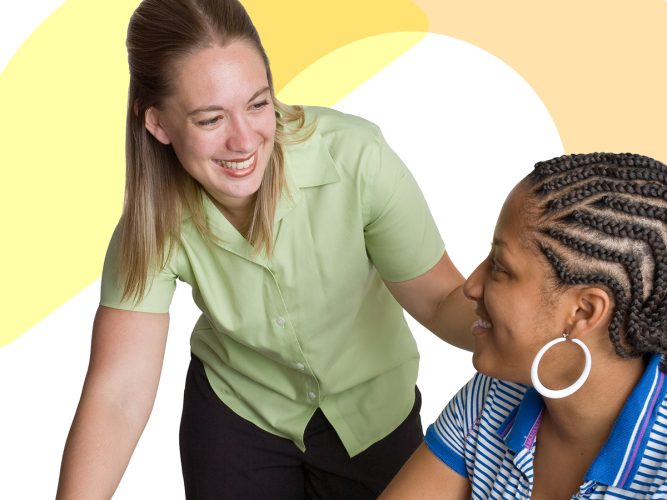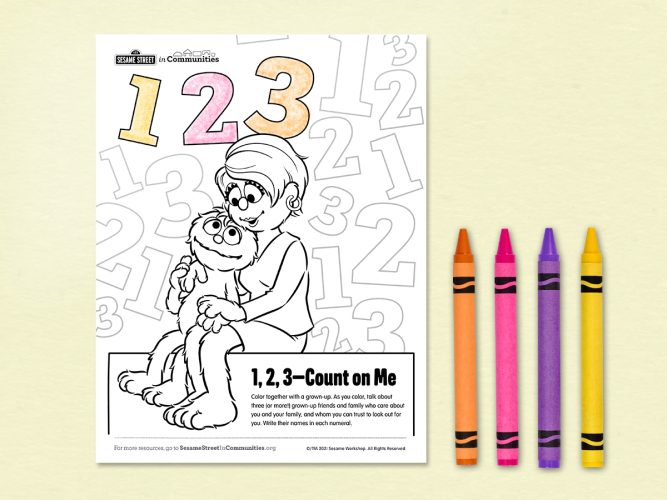
Trauma and the Body
An article on the effects of violence on children.
by Chandra Ghosh Ippen, PhD
In this video, Elmo’s classmate, Zozo, startles and hides after a book falls with a bang. Elmo is confused and worried, but his dad helps him understand that loud noises may remind Zozo of scary things—violence—that happened in their neighborhood. Why would people hurt others? Elmo wonders. What can we do to help? Embedded in this story are core lessons about how experiences of danger affect young children—and ways that grown-ups can restore their sense of safety. Here are some things to keep in mind:
Young children are aware of danger in their environment. Elmo and Zozo remind us that young children are aware not only of experiences of danger that they directly see and hear, but experiences that affect family members and friends. Young children notice when others are scared, and they listen to our conversations. As mini scientists, they have lots of questions.
Many people believe that children under age five are too little to notice or remember when bad things happen, but unfortunately, they do.
Our bodies are designed to remember danger. The book dropping reminds Zozo’s body of past noises connected to community violence. The sound serves as a reminder of danger.
Our bodies tend to remember sights, sounds, smells, tastes, even weather associated with experiences of danger. Feelings in our body (rapid heartbeat, nausea) or feelings we observe in other people, such as anger or sadness, can also become reminders.
Our bodies remember danger in order to protect us. That way, if we find ourselves in a similar situation in the future, we might respond quicker… and that might help us survive. However, we have many false alarms. We encounter a danger reminder and even though we are safe, we react and behave as if we are in danger. This is what happened to Zozo.
Protection involves acknowledging danger and, when possible, talking about ways that grown-ups are working together to reestablish safety. Zozo’s teacher says, “You are safe, and I’m here for you.” Even without knowing his full history, her simple words acknowledge that Zozo may have had experiences of danger, and helps him see that this moment is different. She responds not to his behavior, but to his fear and his need for safety.
Elmo’s dad, in turn, acknowledges the painful reality that people sometimes hurt others, and gives that reality a name: violence. Even though it’s hard to talk about, children feel safer when they can talk to loving adults about scary experiences and fears rather than being alone with their worries and questions.
Young children may also feel responsible when bad things happen, so it’s important for grownups to share that we are aware of the danger, to listen to them and then let them know that they are not responsible, to let them know how we keep them safe when they are with us, and to talk about ways that grownups are working to create safer communities.
Chandra Ghosh Ippen, PhD is a child psychologist and children’s book author. She is Associate Director of the Child Trauma Research Program at the University of California, San Francisco, Director of Dissemination and Implementation for Child-Parent Psychotherapy, and a member of the board of directors of Zero to Three. She has spent the last 28 years conducting research, clinical work, and training in the area of childhood trauma and has co-authored over 20 publications on trauma and diversity-informed practice.

Using These Resources: Violence
Article about the Sesame Street Community & Gun Violence initiative.

We’re Not Alone
A music video on the power of community connections.

1, 2, 3, Color Me
Sitting quietly and coloring together is a stress-reliever for adults and children alike.

I Can Stay Safe
It’s important for children to know several people they can turn to when something goes wrong.

I Don’t Want to Live on the Moon
A song about the power of human connections.

Community Conversation: Community Violence
Many communities are unfortunately impacted by community violence, but there are people and organizations striving to help. You can, too!
